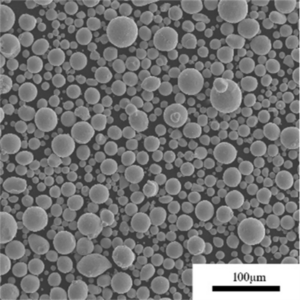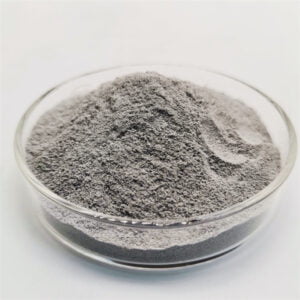Best IN738LC powder for 3D printing in 2025
In738LC powder price list:
| Metal Powder | Size | Quantity | Price/kg | Size | Quantity | Price/kg |
| Inconel 738LC | 15-45μm | 1KG | $137.9 | 20-60μm | 1KG | $134 |
| 10KG | $109.8 | 10KG | $109 | |||
| 100KG | $99.7 | 100KG | $98 |
Low MOQ
Provide low minimum order quantity to meet different needs.
OEM & ODM
Provide customized products and design services to meet unique customer needs.
Adequate Stock
Ensure fast order processing and provide reliable and efficient service.
Customer Satisfaction
Provide high quality products with customer satisfaction at the core.
share this product
Table of Contents
IN738LC is a nickel-based superalloy powder widely used in additive manufacturing, particularly for applications requiring high-temperature strength and corrosion resistance. This advanced material has gained significant traction in industries such as aerospace, energy, and automotive due to its exceptional properties and the ability to produce complex geometries through 3D printing processes like selective laser melting (SLM) and electron beam melting (EBM). In this article, we will delve into the intricacies of IN738LC powder, exploring its composition, characteristics, benefits, applications, printing processes, and key suppliers.
| Alloy | Nominal Composition (wt%) |
|---|---|
| IN738LC | Ni – 16Cr – 8.5Co – 3.4Al – 3.4Ti – 1.7Mo – 2.6W – 1.7Ta – 0.9Nb – 0.05C – 0.03Zr – 0.001B |
Characteristics of IN738LC Powder
| Property | Value |
|---|---|
| Density | 8.19 g/cm³ |
| Melting Range | 1260-1335°C |
| Yield Strength (at 650°C) | >758 MPa |
| Tensile Strength (at 650°C) | >1035 MPa |
| Elongation (at 650°C) | >12% |
| Grain Size | Fine-grained |
| Gamma Prime Phase | High volume fraction |
IN738LC powder exhibits exceptional high-temperature strength, creep resistance, and oxidation resistance due to its unique composition and microstructure. The presence of aluminum, titanium, and refractory elements like tungsten and tantalum contributes to the formation of a high volume fraction of gamma prime (γ’) precipitates, which are responsible for its superior mechanical properties at elevated temperatures.
Benefits of Using IN738LC Powder for 3D Printing
Additive manufacturing with IN738LC powder offers numerous benefits over traditional manufacturing methods, making it an attractive choice for various industries. Let’s explore some of the key advantages:
- Design Flexibility: 3D printing allows for the production of complex geometries and intricate internal structures that would be challenging or impossible to manufacture using conventional methods. This design freedom enables the creation of optimized components with improved functionality and performance.
- Weight Reduction: By leveraging the design flexibility of additive manufacturing, engineers can produce lightweight yet robust components with optimized topologies, resulting in significant weight savings, particularly in aerospace and automotive applications.
- Rapid Prototyping: The ability to quickly produce prototypes and functional parts from IN738LC powder accelerates the product development cycle, enabling faster iterations and reducing time-to-market.
- Material Efficiency: Additive manufacturing processes like SLM and EBM have higher material utilization rates compared to subtractive manufacturing methods, leading to less waste and improved resource efficiency.
- Customization: 3D printing enables the production of customized components tailored to specific requirements, making it ideal for applications with low-volume or unique demands.
- Repair and Remanufacturing: IN738LC powder can be used to repair or remanufacture worn or damaged components, extending their service life and reducing replacement costs.
By harnessing the benefits of 3D printing with IN738LC powder, industries can optimize their manufacturing processes, reduce lead times, and create innovative products with enhanced performance and functionality.

Applications of IN738LC Powder in 3D Printing
| Application | Industry | Examples |
|---|---|---|
| Turbine Components | Aerospace, Energy | Blades, Vanes, Nozzles |
| Automotive Components | Automotive | Turbochargers, Exhaust Manifolds |
| Tooling and Molds | Manufacturing | Injection Molds, Die Casting Molds |
| Heat Exchangers | Energy, Chemical | High-Temperature Recuperators |
| Medical Implants | Healthcare | Orthopedic Implants, Dental Restorations |
The exceptional high-temperature properties and corrosion resistance of IN738LC make it suitable for a wide range of applications across various industries. In the aerospace and energy sectors, this superalloy is widely used for producing turbine components, such as blades, vanes, and nozzles, which are subject to extreme temperatures and high stresses. The automotive industry also benefits from IN738LC powder in the manufacturing of turbochargers and exhaust manifolds.
Additionally, IN738LC powder finds applications in tooling and mold making, where its high strength and wear resistance are invaluable. Heat exchangers and recuperators in the energy and chemical industries also utilize this material due to its ability to withstand elevated temperatures and corrosive environments. Moreover, the biocompatibility of IN738LC makes it a promising candidate for medical implants and dental restorations.
3D Printing Processes for IN738LC Powder
Additive manufacturing processes compatible with IN738LC powder include selective laser melting (SLM) and electron beam melting (EBM). These powder bed fusion techniques offer excellent control over the microstructure and properties of the final component.
- Selective Laser Melting (SLM): In the SLM process, a high-powered laser selectively melts and fuses the IN738LC powder layer by layer, according to the 3D model data. The build chamber is typically filled with an inert gas, such as argon or nitrogen, to prevent oxidation and maintain the desired material properties.
- Electron Beam Melting (EBM): EBM utilizes a focused electron beam to selectively melt the IN738LC powder in a vacuum environment. This process allows for higher build rates and can produce parts with excellent mechanical properties and reduced residual stresses.
Both SLM and EBM processes require careful control of process parameters, such as laser or electron beam power, scan speed, hatch spacing, and layer thickness, to ensure optimal densification, microstructure, and mechanical properties of the final component.
To achieve the desired properties, post-processing steps like stress relief heat treatments, hot isostatic pressing (HIP), and surface finishing may be necessary, depending on the application requirements.
| Powder Specifications |
|---|
| Particle Size Distribution: 15-53 μm |
| Flowability: Excellent |
| Sphericity: High |
| Apparent Density: 4.2-4.6 g/cm³ |
| Standards: AMS 5832, AMS 5385 |
| Typical Grades |
|---|
| IN738LC – Standard Grade |
| IN738LC-LG – Low Gauge Grade |
| IN738LC-HG – High Gauge Grade |
IN738LC Powder Suppliers and Pricing
| Supplier | Location | Price Range (USD/kg) |
|---|---|---|
| Met3DP | USA | $100 – $150 |
| Sandvik Additive Manufacturing | Sweden | $310 – $350 |
| Carpenter Additive | USA | $290 – $330 |
| Praxair Surface Technologies | USA | $300 – $340 |
| Höganäs AB | Sweden | $290 – $330 |
Choosing the right supplier is crucial for obtaining high-quality IN738LC powder suitable for additive manufacturing applications. Met3DP, a leading manufacturer of metal powders optimized for laser and electron beam powder bed fusion, offers a wide range of innovative alloys, including IN738LC. Their powders undergo stringent quality control measures to ensure consistent performance and reliability.
Other notable suppliers of IN738LC powder include Sandvik Additive Manufacturing, Carpenter Additive, Praxair Surface Technologies, and Höganäs AB. These companies have established reputations for producing high-quality materials for additive manufacturing and offer competitive pricing based on volume and specific requirements.
It’s important to note that pricing can vary based on factors such as order quantity, lead time, and any special requirements or certifications needed. Consulting with the suppliers directly and requesting quotes based on your specific needs is recommended for accurate pricing information.
Pros and Cons of Using IN738LC Powder for 3D Printing
| Pros | Cons |
|---|---|
| Excellent high-temperature strength and creep resistance | Higher material cost compared to some other alloys |
| Superior oxidation and corrosion resistance | Potential for cracking and distortion during printing |
| Ability to produce complex geometries | Strict process control required for optimal properties |
| Lightweight and high strength-to-weight ratio | Limited availability of qualified suppliers |
Advantages of IN738LC Powder for 3D Printing
When compared to traditional manufacturing methods, additive manufacturing with IN738LC powder offers several distinct advantages:
- Design Optimization: The ability to produce complex geometries and internal features enables the design of components with optimized topologies, leading to weight reduction and improved performance. For instance, in the aerospace industry, lightweight yet strong turbine blades can be created, resulting in increased fuel efficiency and reduced emissions.
- Rapid Prototyping and Iteration: The additive manufacturing process allows for rapid prototyping and iterative design cycles, significantly shortening the product development timeline. This advantage is particularly valuable in industries with stringent testing and certification requirements, such as aerospace and automotive.
- Customization and Personalization: 3D printing with IN738LC powder enables the production of customized or patient-specific components, catering to unique requirements in fields like medical implants, tooling, and specialized industrial applications.
- Material Efficiency and Waste Reduction: Additive manufacturing processes have higher material utilization rates compared to subtractive methods, resulting in less waste and improved resource efficiency. This not only reduces material costs but also contributes to a more sustainable manufacturing approach.
- Repair and Remanufacturing: IN738LC powder can be used to repair or remanufacture worn or damaged components, extending their service life and reducing replacement costs. This capability is particularly beneficial in industries with high-value assets, such as aerospace and energy.
While additive manufacturing with IN738LC powder offers numerous advantages, it is essential to consider potential limitations and challenges. Process control, post-processing requirements, and the availability of qualified suppliers can impact the overall feasibility and cost-effectiveness of using this material for specific applications.
Limitations of IN738LC Powder for 3D Printing
Despite its numerous benefits, using IN738LC powder for 3D printing also presents some limitations and challenges:
- Higher Material Cost: Nickel-based superalloys like IN738LC are generally more expensive compared to some other alloys used in additive manufacturing, which can increase the overall cost of production.
- Strict Process Control: Achieving optimal mechanical properties and part quality with IN738LC powder requires precise control over various process parameters, such as laser or electron beam power, scan speed, hatch spacing, and layer thickness. Deviations from the optimal parameters can lead to defects or suboptimal performance.
- Potential for Cracking and Distortion: Due to the high thermal gradients and residual stresses involved in the additive manufacturing process, IN738LC components can be susceptible to cracking and distortion. Careful design, process optimization, and post-processing techniques like stress relief heat treatments and hot isostatic pressing (HIP) may be necessary to mitigate these issues.
- Limited Availability of Qualified Suppliers: While several suppliers offer IN738LC powder, the number of qualified and experienced suppliers may be limited compared to more widely used materials. This can impact the availability, lead times, and pricing of the powder.
- Post-Processing Requirements: Depending on the application and performance requirements, post-processing steps like hot isostatic pressing (HIP), heat treatments, and surface finishing may be necessary to achieve the desired mechanical properties and surface quality. These additional steps can increase the overall cost and lead time.
It is crucial to carefully evaluate the specific requirements of your application, weighing the advantages and limitations of using IN738LC powder for 3D printing. Collaboration with experienced suppliers, process optimization, and a thorough understanding of the material’s behavior during additive manufacturing are essential for successful implementation.
Get Latest Price
About Met3DP
Product Category
HOT SALE
CONTACT US
Any questions? Send us message now! We’ll serve your request with a whole team after receiving your message.

Metal Powders for 3D Printing and Additive Manufacturing
COMPANY
PRODUCT
cONTACT INFO
- Qingdao City, Shandong, China
- [email protected]
- [email protected]
- +86 19116340731












